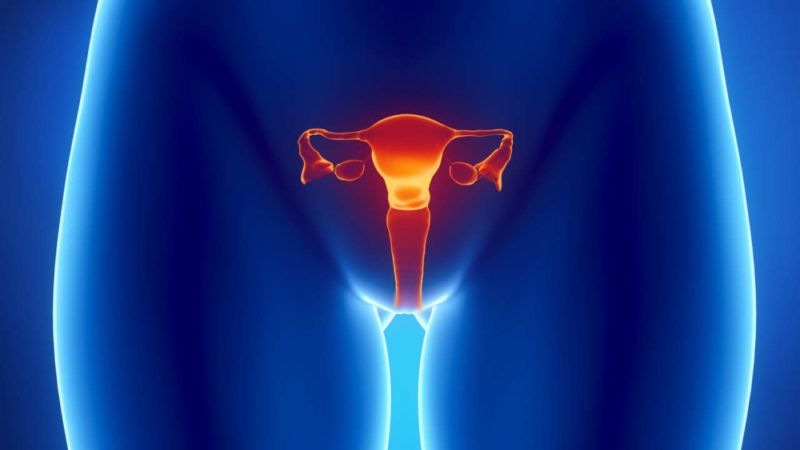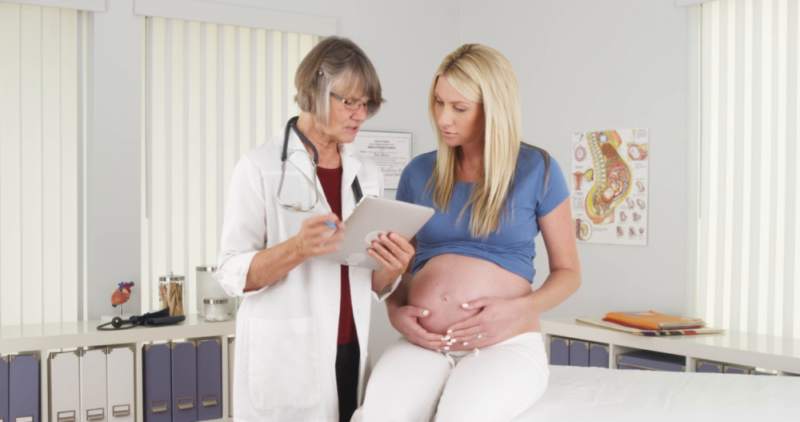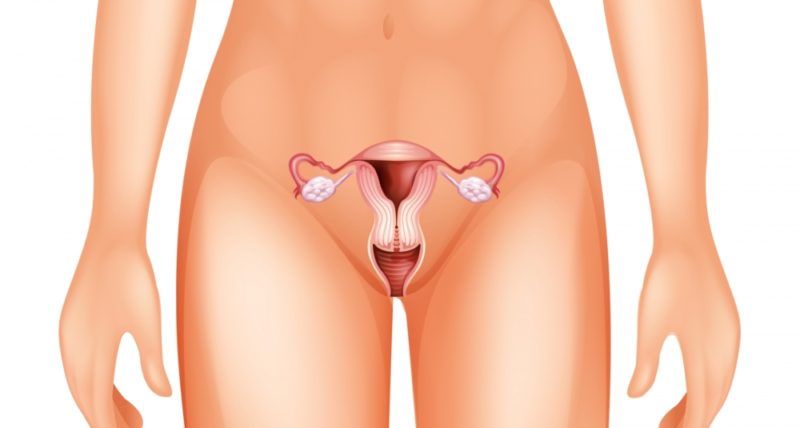The female reproductive system is distinguished by its unique structure and functionality. However, some diseases can disrupt the coordinated mechanism of the organs. One of such pathologies is vaginal prolapse, which jeopardizes the usual full-fledged life of women.
Material Content:
- 1 The reasons for the omission and degree of development of the disease
- 2 Symptoms of the development of the disease
- 3 Diagnostic measures
- 4 Vaginal prolapse and pregnancy
- 5 Conservative and surgical methods for the treatment of pathology
- 6 Gymnastics and a set of therapeutic exercises
- 7 Prevention of prolapse of the walls of the vagina
The reasons for the omission and degree of development of the disease
Vaginal wall prolapse (vaginal prolapse) occurs for a number of reasons:
- Birth injuries, defective recovery after childbirth.
- Increased abdominal pressure (against the background of grueling physical work, sports loads).
- Gastrointestinal diseases characterized by constipation.
- Difficulty with bowel movement.
- Pathology of the uterus, creating a load on the perineum.
- Problems developing after removal of the uterus (extirpation).
- Obesity.
The reason for the omission can also be provoked by the weakness of the ligaments, due to the genetically or age-related characteristics of the woman.
So, in patients of mature age (especially those who entered post-menopause), pelvic muscle weakness is monitored more often than in young people.
Symptoms of the development of the disease
Modern gynecology distinguishes 2 types of prolapse of the walls of the vagina, provoked by certain physiological factors: cystocele and rectocele.
Cystocele is a prolapse of the anterior vaginal wall, causing displacement of the bladder and forcing muscles of the vagina, causing urinary incontinence. The latter occurs due to incomplete emptying of the bladder, and stagnant urine is a suitable medium for various infections.
Prolapse of the posterior wall of the vagina is called rectocele. This condition is characterized by a sensation of a foreign body in the vagina, preventing the woman from sitting and walking. This pathology is provoked by the weakness of the muscle tissue of the posterior pelvic arch. As well as a rectocele, it can cause stool disorders, since a “pocket” with accumulated feces forms in the rectum. The defecation process is thus impeded.
There are 3 types of prolapse, depending on the degree of protrusion of the vagina from the genital gap:
- 1 (incomplete) - the lower third protrudes;
- 2 (partial) - the lower and middle third protrude;
- 3 (full) - the entire organ wall is bulging.
Often, the initial degree of the disease is not monitored by a woman at all and can only be detected with a thorough examination by a gynecologist. But sometimes at the very beginning of the development of an ailment, women feel uncomfortable with intimacy, pain in the lower abdomen, discharge with blood in the vagina, and other alarming signs.
In some cases, some symptoms are added to the listed characteristics:
- difficulty urinating, defecating;
- urinary incontinence (more common in mature women);
- congestive processes in the urinary organs.
Women who have experienced prolapse after delivery sometimes feel the so-called “lower abdomen”, provoked by pressure of the bladder on the peritoneum.
Diagnostic measures
To monitor signs of vaginal prolapse, we apply a number of diagnostic methods:
- Collection of medical history and complaints. The doctor clarifies what disturbs the patient, in which cases the discomfort intensifies.
- Analysis of obstetric and gynecological history. The features of the delivery process, the weight of the baby, the number of pregnancies are taken into account.
- Analysis of life history. Living conditions, features of the profession, the presence or absence of physical overload, etc.
- Gynecological examination.
For a more accurate diagnosis of the pelvic organs, an ultrasound procedure is recommended.
Vaginal prolapse and pregnancy
Often, vaginal tissues are weakened even before pregnancy. Then, during the period of bearing the child, this problem may be aggravated, as the load on the pelvis increases. Most cases of vaginal prolapse are associated with the pressure of the growing fetus on the cervix and its gradual prolapse under this load.
Such a pathology can be extremely dangerous for a woman and a child. If the disease is not detected in the initial stages, it can provoke a miscarriage, in the last weeks of pregnancy - premature delivery.
If the prolapse was detected in the early stages, as a rule, it will not cause serious problems for a pregnant woman. When the situation is complicated, doctors carry out procedures to fix the organs released so that they do not provoke additional pressure.
In order to prevent dangerous situations of vaginal prolapse, pregnant women are advised to perform special exercises for intimate muscles at the very earliest stages of gestation. And also expectant mothers should wear a special supportive bandage that does not create pressure on the abdominal cavity. An additional method of solving the problem may be the wearing of special supportive devices located directly in the vagina. In some cases, a combination of all the above methods is recommended for pregnant women in order to avoid possible complications of vaginal prolapse.
Conservative and surgical methods for the treatment of pathology
Therapy for vaginal prolapse directly depends on the degree of prolapse and suggests the following methods of conducting medical tactics.
Conservative
It implies a number of activities:
- perineum muscle training;
- Exercise therapy;
- the exception of heavy physical exertion;
- gynecological massage.
Orthopedic
It involves the use of pessaries - plastic rings placed in the vagina and supporting its walls.
Surgical
Volumes and methods of surgical intervention are characterized by the degree of the prolapse process:
- Colporaphia - excision or complete removal of excess vaginal tissues and their further stitching.
- Colpoperineorephia - elimination of excess vaginal tissues, their stitching with additional strengthening of the pelvic muscles.
The most effective, in terms of solving the problem of vaginal prolapse, is surgery.
Gymnastics and a set of therapeutic exercises
In order to prevent the possible loss of female reproductive organs, as well as to improve the condition with the existing omission, you should perform special gymnastics:
- Kneeling, leaning on straight arms, hold your breath, making your back round, lower your head. Lock position. To reduce the muscles of the perineum, after trying to bend in the lower back as much as possible.
- Kneeling and resting on your hands, alternately rotate the pelvis in different directions for 20 seconds.
- Standing / sitting cross-legged, as you exhale try to divert in different directions of the foot.
- Sitting on a chair to round the back, while inhaling, compress the muscles of the anus.
- Lying on the back of the shin, place on a chair, put a pillow under the pelvis. Fix the pose for 5 minutes.
In addition to these exercises, you can perform intimate gymnastics, designed specifically for women by Arnold Kegel.
It is convenient in that it is possible to make movements of the vaginal muscles without taking into account time and place. The alternation of fast and slow contractions of the intimate muscles, “pushing”, pulling up, relaxing and other exercises will help strengthen the muscular system of the pelvis. You should start with a small number of exercises, gradually increasing the number of movements and the time of daily exercises.
Prevention of prolapse of the walls of the vagina
In order to prevent the prolapse of the walls of the vagina and subsequent prolapse, it is recommended to observe a number of preventive measures.
They are as follows:
- Timely diagnosis and therapy of the initial stage of the problem.
- Limitation or complete exclusion of exhausting physical exertion, drag and drop, etc.
- Systematic training of the muscles of the perineum.
- Maintaining a healthy lifestyle.
- Timely visit to the gynecologist (twice a year).
Vaginal prolapse is an unpleasant and dangerous physiological condition for women. This disease worsens the quality of the intimate life of ladies and gives them a lot of inconvenience, provoking discomfort, physical and emotional. The good news is that the prolapse and prolapse of the vaginal walls can be prevented by systematic training of the vaginal muscles and regular visits to the gynecologist.
















